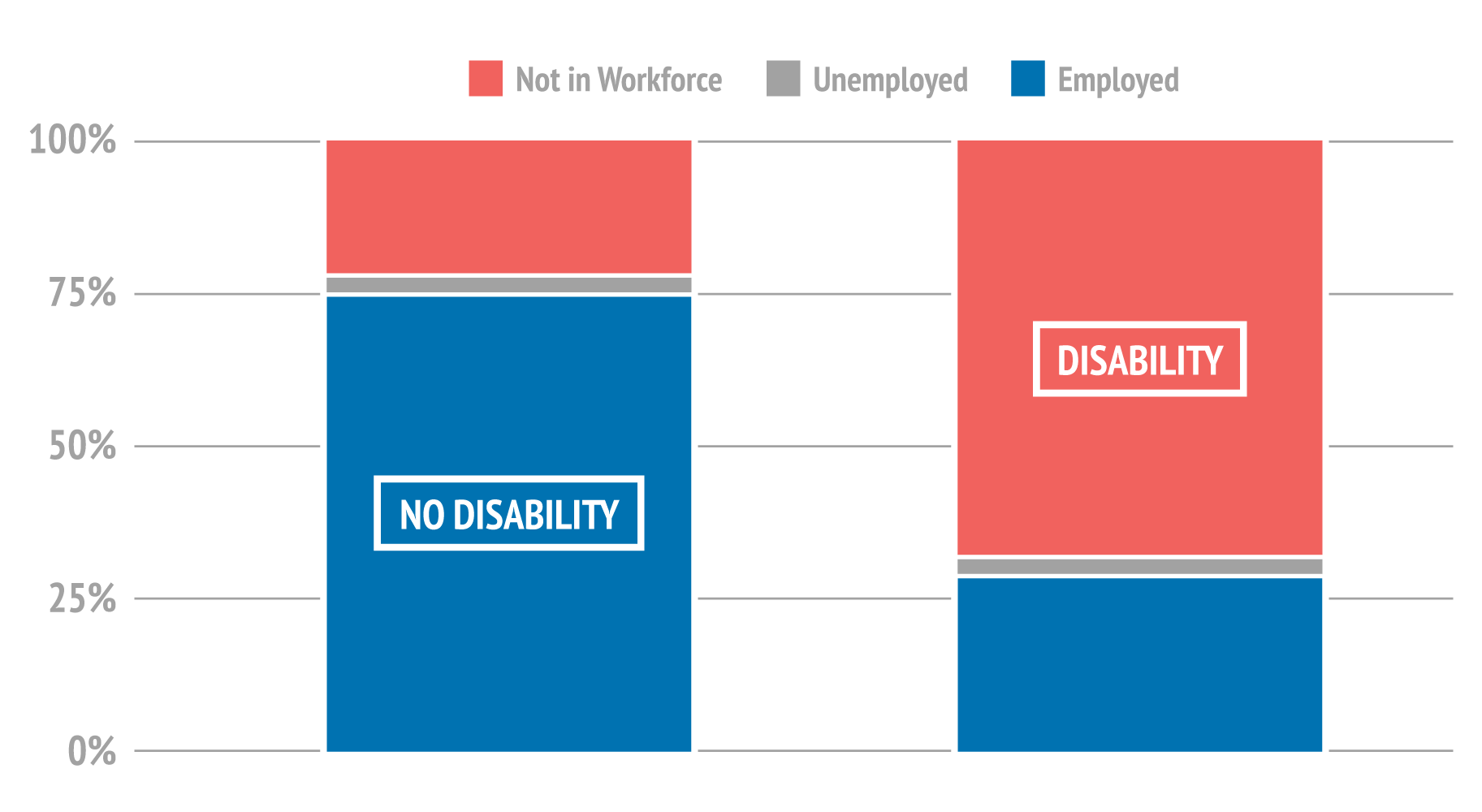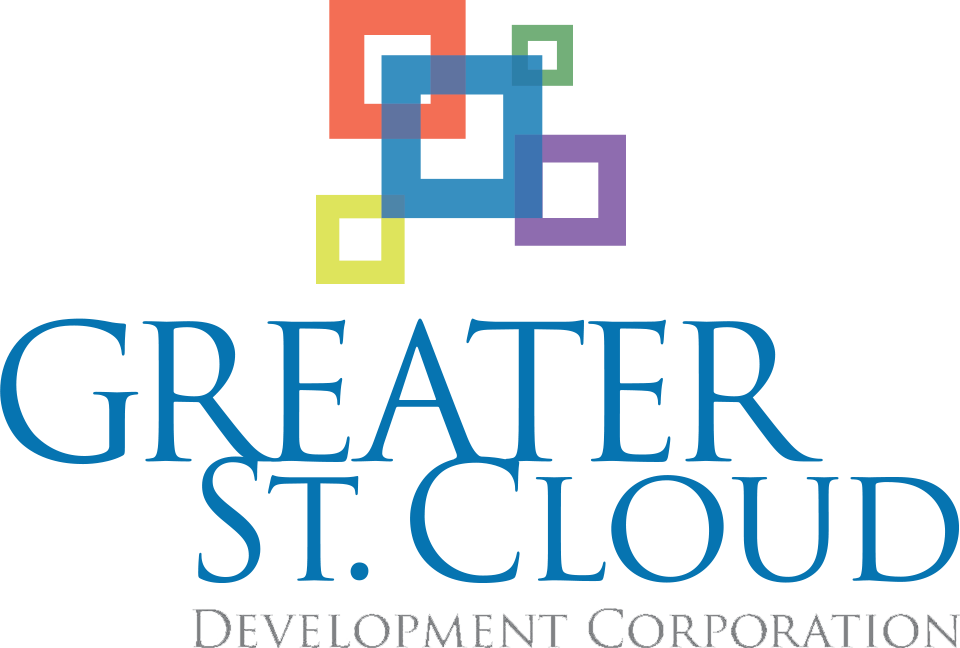
Recruiting & Retention
Employing Those With Disabilities
Empowering people with disabilities can benefit business
Become a Disability Inclusion Champion. Hire someone with a disability today and you will be amazed at the result.
What if you found out that your company is significantly underutilizing a critical talent pool? At a time when there are more job openings in the U.S. than workers, you’d want to know more, wouldn’t you?
And, what if, by recognizing the value of that talent pool and leveraging it, your company could also realize significant gains in profitability, value creation and shareholder returns — as well as other business benefits?
Companies that embrace best practices for employing and supporting more persons with disabilities in their workforce have outperformed their peers.
Persons with disabilities present business and industry with unique opportunities in labor-force diversity and corporate culture, and they’re a large consumer market eager to know which businesses authentically support.
A Vast, Untapped Market
Despite the strength of the U.S. labor market, persons with disabilities are strikingly under-employed. As of July 2018, only 29 percent of Americans of working age (between ages 16 and 64) with disabilities participated in the workforce, compared with 75 percent of Americans without a disability. In 2017, the unemployment rate for persons with disabilities was more than twice that for those without a disability—9.2 percent versus 4.2 percent.
There are 15.1 million people of working age living with disabilities in the U.S., so the research suggests that if companies embrace disability inclusion, they will gain access to a new talent pool of more than 10.7 million people.
That represents a significant opportunity to strengthen our businesses and our economy. According to other research, employees with disabilities offer tangible benefits, including increased innovation, improved productivity, and a better work environment. And of course, workers are consumers too. The GDP could get a boost up to $25 billion if just 1 percent more of persons with disabilities joined the US labor force.
The good news, is that US organizations are successfully employing people with disabilities, creating initiatives and developing their inclusion program. There is great opportunity that remains.
Figure 1: A Wide Employment Gap
Population (between ages 16 and 64) by labor-force status and disability status, July 2018

Source: Accenture analysis based on data from the Bureau of Labor Statistics, July 2018
59% of accommodations cost absolutely nothing to make
A high percentage (59%) of accommodations cost absolutely nothing to make, while the other accommodations typically cost only $500 per employee with disability. CEO’s and investors need to know the strong qualitative and quantitative business case for robust disability inclusion programs.
Three reasons companies haven’t leveraged the talents of persons with disabilities
- A lack of understanding of the scope of the talent available.
- A lack of understanding of the potential benefits.
- Misconceptions about the cost versus the ROI of disability inclusion.
4 Key Actions to build an inclusive workplace
Employ
Ensure persons with disabilities are represented in their workplace.
Enable
Employers must provide employees with disabilities the accessible tools and technology and/or a formal accommodations program.
Engage
To foster an inclusive culture throughout the organization, companies must generate awareness-building through recruitment efforts, disability education programs and grass-roots-led efforts and events.
Empower
Companies must offer mentoring and coaching initiatives, as well as skilling/reskilling programs, to ensure that persons with disabilities continue to grow and succeed. Persons with disabilities should occupy roles at all levels, including top leadership positions.
5 ways to engage and attract job seekers with Disabilities
Employers investing and engaging in hiring those with disabilities, were two times more likely to outperform their peers in terms of total shareholder returns compared to those that did not.
Companies that have improved their inclusion of persons with disabilities were 4 times more likely to have total shareholder returns outperform those of their peer group.
Be Flexible
Including flexible work options such as work from home or flexible scheduling to accommodate alternative transportation requirements, medical appt, etc.
Engage with Students
The National Center for Learning Disabilities estimates there are 2.4M students in the United States with disabilities and three in five of these students are not currently working. Connect with various actions organizations that optimize their hiring strategies for this population such as WACOSA or other disability services centers. In addition, there are many opportunities throughout the year where employers can engage with promoting their support as well as engaging with our youth living with disabilities.
Participate in Celebratory Events
Sponsoring and participating in disability related celebrations provides employees more visibility into what an organization’s culture is like and helps employer build a positive brand reputation.
Leverage Social Media
Utilize this ever important tool within our modern recruitment industry to highlight and attract your inclusive recruitment and employment endeavors to help attract job seekers with disabilities. A recent survey showed that 79 percent of job seekers use social media to look for employment.
Promote Accessible Policies
Help ensure that individuals with disabilities are considered and advocated for in every stage of a company’s operation and processes. This includes access to the company’s website, job application process, workplace technologies and content.
Benefits of Inclusion:
- Reliability and Retention.
- Less Work related accidents.
- Receive tax credits.
- Increased diversity in the workplace — new perspectives, new ideas.
- Increased Innovation: Persons with disabilities develop strengths such as problem solving skills, agility, persistence, forethought and willingness to experiment — all of which are essential for innovation.
- Improved Shareholder Value: Disability inclusion is a key component of regulatory metrics.
- Improved Productivity — all workers benefit from a more diverse workplace. Studies show that working alongside employees with disabilities makes non-disabled individuals more aware of how to make the workplace more inclusive and better for everyone. Staff turnover is lower, by as much as 30 percent, when a well-run disability community outreach program is in place.
- Enhanced Reputation: Companies that adopt inclusive marketing and advertising efforts tend to stand out from the competition.
66%
of consumers will purchase goods and services from a business that features persons with disabilities in their advertising.
78%
will purchase goods and services from a business that takes steps to ensure easy access for individuals with disabilities at their physical locations.
They are just as capable as every other candidate!
How do I get connected to these job seekers?
Expanding Capacity Building Cohort (ECBC)
Jennifer Lecy
jennifer.lecy@isd742.org
Let’s create a story like this for Greater St Cloud!
Additional Resources
Job Accommodation Network
Job Accommodation Network (JAN) is a national resource for employers that provides support and information about facilitating employment training for people with disabilities. JAN is a service provided by the U.S. Department of Labor’s Office of Disability Employment Policy (ODEP). JAN provides consulting series for all employers at no cost to the business, regardless of the size of an employer’s workforce. Services include one-on-one consultation about all aspects of job accommodations, including the accommodation process, accommodation ideas, product vendors, referral to other resources, and ADA compliance assistance.
Tax Incentives for Employers
This link provides information on the Disabled Access Credit, Barrier Removal Tax Deduction, and Work Opportunity Tax Credit (WOTC) for employers.
Integrating a Deaf Employee into the Workplace
Resource on how to integrate a deaf employee into the workplace.
Communicating with Deaf Individuals in the Workplace
This article is also about communicating with deaf individuals in the workplace.
Hiring People with Disabilities Resources
View a variety of resources regarding hiring people with disabilities.
CareerForce: Hiring People with Disabilities
Read an article regarding hiring people with disabilities.
The Americans with Disabilities Act Amendments Act (ADAAA) defines a person with a disability as someone who has a physical or mental impairment that substantially limits one or more major life activities; has a record of such an impairment; or is regarded as having such an impairment. The ADA was amended in 2008 and became effective January 1, 2009. The ADAAA requires a broader interpretation of disability by schools, testing agencies and employers than the original law.
